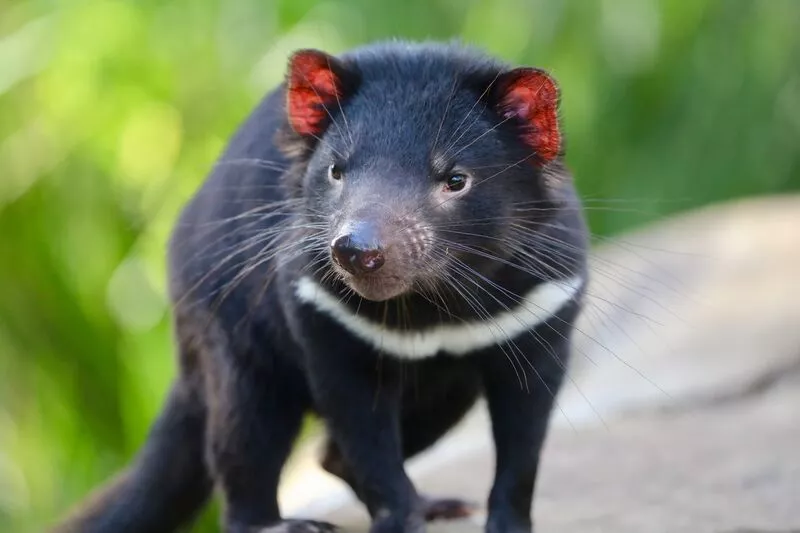The Tasmanian devil is so called because it’s only found in the wild on the island of Tasmania. But now, conservationists have reintroduced a population to mainland Australia for the first time in thousands of years.
About the size of a small dog, these carnivorous marsupials once roamed all of Australia, but are believed to have gone extinct everywhere but Tasmania around 3,000 years ago. Dingoes are often blamed, since they would have competed for food and probably won, due to their larger size.
The devils found solace in Tasmania, where dingoes never arrived, but in recent years they’ve faced new threats. Devil Facial Tumor Disease (DFTD) is a deadly and mysteriously contagious form of cancer that has killed so many of the animals that they’re now considered endangered, with just 25,000 estimated to remain in the wild.

Now their story comes full circle, as they move back to the mainland to escape an existential threat. On September 10, conservationists from Aussie Ark, WildArk and Global Wildlife Conservation released 11 Tasmanian devils into a 1,000-acre wildlife sanctuary in Barrington Tops, New South Wales, about 200 km north of Sydney. The sanctuary is designed to protect the animals from dangers like disease, fire, cars, and feral pests like cats and foxes.
These devils were born and raised as part of Aussie Ark’s breeding program, which has seen over 390 devils born in the past decade. The individuals were selected for rewilding based on their suitability to breed without any inbreeding.
This release follows an earlier assisted trial release of 15 devils, meaning a total of 26 Tasmanian devils now roam the Australian mainland once again. And that’s just the beginning. Two more reintroductions are planned for the coming years, with 20 more animals to be released in 2021 and another 20 the year after. To ensure the population is staying healthy and safe, the devils will be monitored using camera traps, tracking collars, microchips and regular surveys.
The program isn’t just about protecting the devils themselves – Aussie Ark considers the devils as one of seven cornerstone species crucial to restoring Australian ecosystems. The others – Eastern quolls, Brush-tail rock wallabies, Rufous bettong, long-nosed potoroo, parma wallabies and southern brown bandicoots – are expected to be released into the wild sanctuary in future.

“Not only is this the reintroduction of one of Australia’s beloved animals, but of an animal that will engineer the entire environment around it, restoring and rebalancing our forest ecology after centuries of devastation from introduced foxes and cats and other invasive predators,” says Tim Faulkner, president of Aussie Ark. “Because of this reintroduction and all of the hard work leading up to it, someday we will see Tasmanian devils living throughout the great eastern forests as they did 3,000 years ago.”
A video describing the release program can be seen below.
Source: Global Wildlife Conservation






